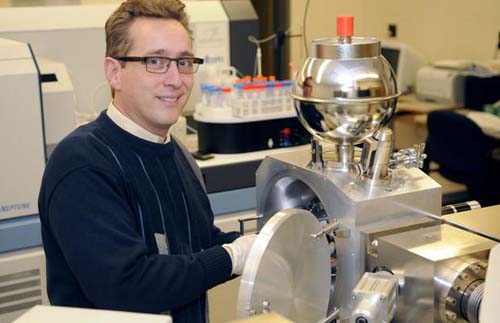Change the latest periodic table of elements
The atomic mass of 10 elements in the periodic system of tables including hydrogen, lithium, carbon, nitrogen, oxygen, silicon, sulfur, chlorine and thallium is still known in the literature and textbooks will be changed.
Dr. Michael Wieser of the University of Calgary and secretary of the Commission on Isotopes and Atomic Volume of the International Association of Chemistry and Applied Chemistry (IUPAC) said that for more than 150 years we still think that mass the atoms of the elements are constants, but his research and colleagues show that these values change in some distance .

Chemist Michael Wieser. ( Photo Canada.com)
Modern analytical techniques help determine atomic mass more accurately, small changes in atomic mass have great significance in research as well as industry.
For example, the accuracy of carbon isotope measurements directly affects the determination of purity and food origin. Similarly, accurately measure the isotopes of nitrogen, chlorine . help trace the source of water pollution .
In sports, people discovered athletes using doping and testosterone by measuring carbon isotope content. " By knowing the atomic mass, we can decipher the historical origin of an element in nature, " Dr. Weiser said.
The atomic mass of 10 elements will be in a range, with upper and lower limits, meaning that it changes rather than fixed as previously thought. For example, the mass of sulfur is still considered to be 32,065, now it will be in the range 32,059 - 32,076, depending on the compounds it is present.
Some elements such as fluorine, sodium, aluminum and gold have atomic masses that are almost fixed because they only vary slightly from the sixth digit after the decimal point.
IUPAC Deputy Director, Dr. Fabienne Meyers, said that the results of this study are important but since then, there will be challenges in teaching students to perform chemical problems.
Currently, scientists in the fields of physics, environment, chemistry and geography at the University of Calgary are using the results of the study to elucidate the origin of meteorites, identify sources of air pollution. , water and study the existence of carbon dioxide in the ground.
The work was conducted between 1985 and 2010. IUPAC accepted the results and will use this data as an international standard.
- Add 3 new elements in the periodic table
- 150th anniversary of the periodic table of chemical elements
- The periodic table has four new elements, the 7th cycle has been filled
- Chemical elements do not follow quantum mechanics theory
- New elements Copernicium and the path to glory
- The periodic table has a new 'member'
- The periodic table adds two super heavy elements
- The search for new elements will become very difficult from now on
- A new periodic table is coming soon
- Dubna reaffirmed the latest element 117
- The giant 'inventors' at Berkley
- March 6, 1869: The periodic table of chemistry was born
 Vietnam 5th Asian champion on fuel-efficient vehicles
Vietnam 5th Asian champion on fuel-efficient vehicles We can read all NASA studies completely free of charge
We can read all NASA studies completely free of charge Singer and songwriter Bob Dylan won the 2016 Nobel Prize for Literature
Singer and songwriter Bob Dylan won the 2016 Nobel Prize for Literature Scientific revolution in Asia
Scientific revolution in Asia